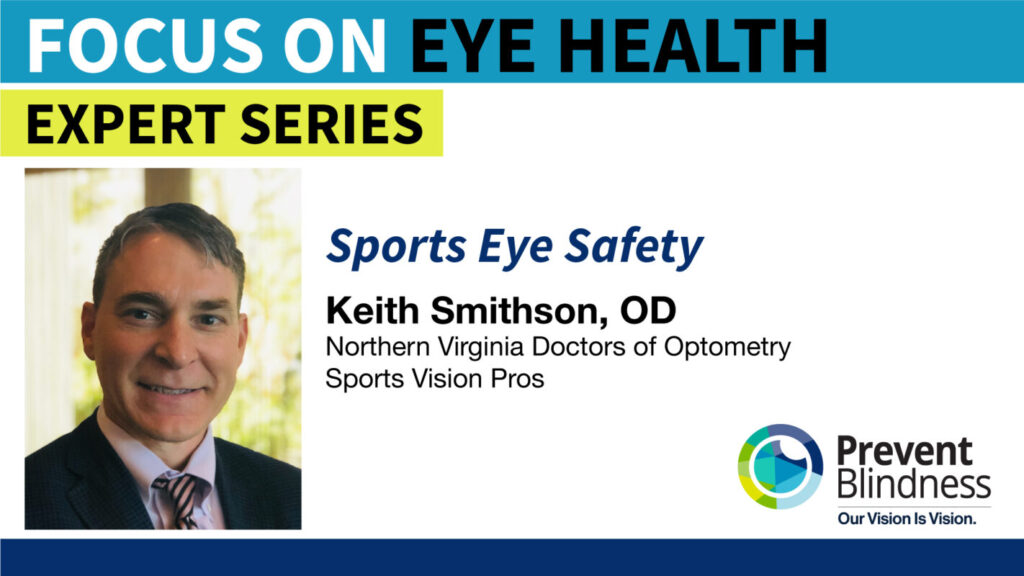Prevent Blindness Declares September as Sports Eye Safety Month to Educate Public on the Risk of Significant Eye Injuries and the Need for the Proper Sports Eye Protection
New annual data from Prevent Blindness, the nation’s leading eye health nonprofit organization, shows that there were more than 32,000 sports-related eye injuries treated in the United States last year, an increase of almost 20 percent from the previous year. To educate the public on the risk of significant and potentially blinding eye injuries and the need for proper eye protection, Prevent Blindness has declared September as Sports Eye Safety Month.
In addition to providing free downloadable fact sheets, shareable social media graphics, and a dedicated webpage, Prevent Blindness is debuting a new episode in the online Focus on Eye Health Expert Series, “Sports Eye Safety.” Jeff Todd, president and CEO of Prevent Blindness, interviews sports vision specialist Keith Smithson, OD, of Northern Virginia Doctors of Optometry, and Sports Vision Pros.
The new Prevent Blindness data showed once again that the category of “non-powder guns, darts, arrows, and slingshots” had the overall highest rate of eye injuries. For children ages 0-14, “pools and water sports” had the highest rate of injuries. Types of sports-related eye injuries include blunt trauma, penetrating injuries, eye infections, and corneal scratches and abrasions.
According to Keck Medicine of USC, athletes may also be at risk for a Radiation Eye Injury. Prolonged exposure to the ultraviolet rays of the sun can be incredibly harmful to vision. Athletes who play in water or snow sports, such as surfing or snow skiing are exposed to bright glaring sunlight that reflects off water or snow, increasing the risk of vision loss or damage.
Prevent Blindness strongly recommends that athletes of any age wear protective eyewear when participating in sports. Athletes should always consult an eyecare professional to determine the best kind of eye protection for their sport and medical needs. Fortunately, according to the National Eye Institute, wearing the right protective eyewear can prevent 9 out of 10 sports-related eye injuries.
Prevent Blindness and Rec Specs are partnering during September’s Sports Eye Safety Month to promote education and awareness on ways to protect vision. To download free educational and promotional materials, including the Sports Eye Safety Guide from Liberty Sport, the company behind Rec Specs, visit LibertySport.com/resources, or contact Jon Phillips at (973) 882-0986 x113, or [email protected]. Social media toolkits are also available by request.”
“A sports-related eye injury can happen in an instant, but the effects may last a lifetime,” said Todd. “Team up with your eye doctor to find the best sports eye protection to help keep you in the game today and save your sight for the future.”
Find out more about sports eye safety.
Download a copy of the 2023 Sports Eye Safety media release.

